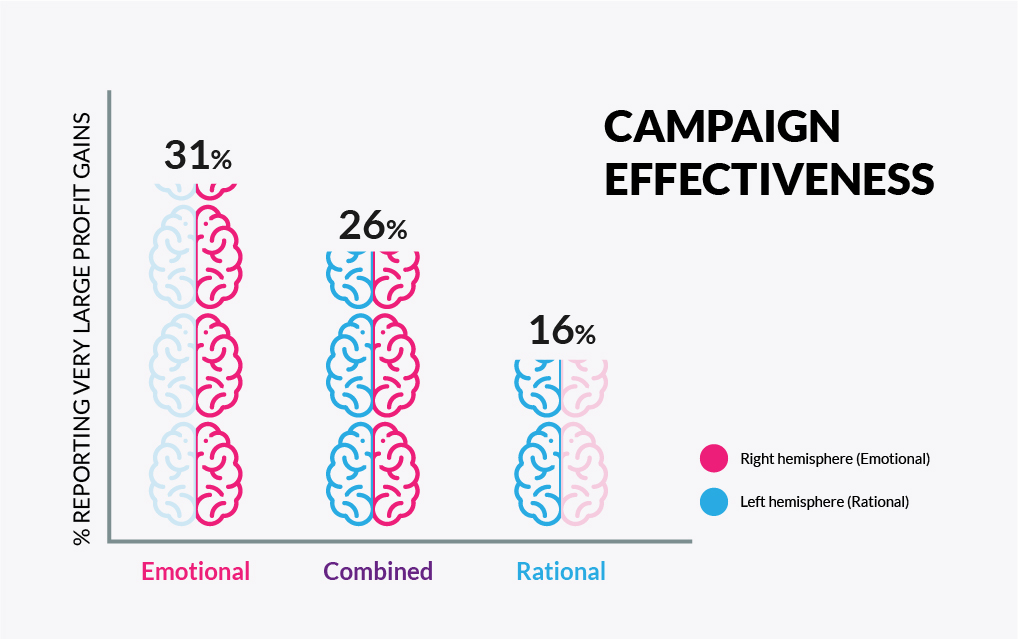1. What is emotional marketing and why does it work?
As mentioned above, we usually opt for a marketing methodology and implement strategies to attract, convert, increase first appointments and build customer loyalty (where applicable). And in this process, emotional marketing can help us to make our potential consumers perceive us as a brand, remember us, trust our services and decide to purchase them.
Emotional marketing includes those applications in marketing and advertising that mainly use emotions such as happiness, sadness, anger or fear to provoke a certain response from the consumer, which obviously helps us to achieve our objectives.
And why emotion marketing is effective?
If we take into account that decisions, not only purchasing decisions, but those that make us fill out a form, download interesting content or visit a clinic for the first time, are motivated by emotions, by what we feel, it is essential that when creating our campaigns we take into account how to appeal to the feelings of our potential consumers.
Think that today’s users are educated and accustomed to searching online. We continuously search for content on the Internet so there is an over saturation of information. But is all the content that is consumed really relevant? Can it connect with the consumer? Can it motivate them to take the action you wanted according to your strategy?
2. How can emotional marketing help you inspire an action?
If emotions are a decisive factor when making a decision, emotional marketing can help you connect with your potential consumer at the right time. Multiple studies prove it. In fact campaigns with purely emotional content perform better, almost twice as well as rational campaigns.

So what emotions can help us inspire an action in our consumers?
2.1. Happiness motivates us to share.
As explained in this New York Times article, a University of Pennsylvania study has shown that positive content is more easily “shareable” by Internet users. In other words, the virality of your content is closely linked to the positivity of the information you offer. For example, in social networks, the “happiest” publications can encourage your followers to share them.
2.2. Sadness makes us empathize and connect.
Most likely, you are familiar with the marketing and advertising campaigns of NGOs and other types of associations that appeal to the feeling of sadness to obtain donations and get the altruism of their potential consumers. For a clinic, that empathy and connection can be obtained through real stories and success stories, in which there is a greater identification of feelings.
2.3. Fear makes us avoid uncertainty.
That is, emotional marketing campaigns that use fear tend to incite consumers to act with urgency, caution and to hold on to what is safe. Useful for generating loyalty, fear is closely linked to the content of clinics whose service is the resolution of health problems (such as dental clinics).
2.4. Anger makes us act with passion.
This strong emotion is ideal to viralize a movement or to position the audience for or against an idea.
As you can see, content plays a key role in expressing these emotions and inciting your consumers to take action.
3. What should you take into account when selecting the emotions for your campaigns?
3.1. Study your buyer persona.
To know which emotions are the leaders in each campaign you must take into account what type of people you are going to create a connection with. This is why it is essential to study and get to know your potential customers in depth when you want to appeal to the

